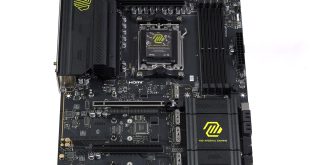CPU Overclocking:
Using the P8Z77-V LX2's Auto OC feature, a CPU overclock of 4223MHz was achieved by way of a 103MHz base clock and 41x multiplier. A slight increase in CPU voltage was also applied; we registered a maximum of 1.200V during Prime95 load. Our memory was reduced to the 18.66x divider which, with the 103MHz base clock, resulted in a frequency of 1921MHz. Timings were not adjusted.
This is a quick and easy method for entry-level users who aren't confident overclockers to achieve a noticeable performance boost. We were impressed by the motherboard's configured CPU settings, but slightly disappointed by the drop to an 18.66x memory divider; the 20x divider would have still presented a sub-stock, and hence stable, frequency for our 2133MHz Patriot memory.
The automatic overclock validation can be found here.
As with the -LK version of the motherboard, the P8Z77-V LX2's helpful Digi+ VRM settings allowed us to enhance our overclocking capabilities. We set the CPU Power Phase Control to Extreme and CPU Current Capability to the maximum – 120%. The CPU Power Duty Control was also set to Extreme, while the CPU Fixed Frequency remained untouched.
Our CPU Load-line Calibration was initially set to Regular, but we later changed this to Ultra High to provide a closer match to our set CPU voltage during load conditions.
Power saving settings were disabled.
We applied a static voltage of 1.300V to allow the P8Z77-V LX2 to push our i5 3570K chip, while still operating within safe limits for daily usage. For 24/7 overclocks, we would recommend tailoring the Offset voltage to a setting which provides a stable frequency, allowing the motherboard to only increase the CPU's voltage when the additional power is required.
Our maximum stable overclock was 4.7GHz, achieved via a 47x multiplier and 100MHz base clock. We tried to push for 4.8GHz, but this frequency wouldn't even boot with our specific settings.
We noticed that it was very difficult to get the Asus P8Z77-V LX2 motherboard to provide exactly 1.300V to our CPU. Different Load-line Calibration settings adjusted the load voltage above and below the 1.300V mark, but never within 10 millivolts. Using the ‘Ultra High' Load-line Calibration setting, our Core i5 3570K chip was supplied with a maximum of 1.312V under full load.
4.7GHz is a very strong overclock for an entry-level motherboard which features a somewhat basic 4+1 phase power design.
Our 4.7GHz validation can be viewed here.
Memory Overclocking:
While a system's maximum memory frequency may be heavily swayed by the CPU's individual memory controller, the motherboard's performance can also help to obtain higher speeds.
We switched to our 2133MHz set of Team Xtreem LV memory. This kit was chosen as it is geared for overclockers, with its large heatsinks and tight timings, and we know that it is capable of frequencies in the region of 2666 MHz.
Knowing that Asus' similarly-powered P8Z77-V LK motherboard could push our Team Xtreem LV kit to 2666 MHz, we were a little disappointed to see the P8Z77-V LX2 hit a limit of 2600 MHz, as proven by Super Pi's instability. Nevertheless, a frequency of 2600 MHz with a voltage of 1.7V and slightly relaxed timings is a very impressive result for an entry-level motherboard.
Our 2600MHz 11-12-12-28-1T memory overclock validation can be viewed here.
 KitGuru KitGuru.net – Tech News | Hardware News | Hardware Reviews | IOS | Mobile | Gaming | Graphics Cards
KitGuru KitGuru.net – Tech News | Hardware News | Hardware Reviews | IOS | Mobile | Gaming | Graphics Cards










good deal but I like the gigabyte UD3, same price, sliglthy better looking IMO
These are great boards for a cheap, powerful system, but I wonder about the reliability due to the power design on the PCB
Great & cheap mobo… Im a lucky owner 🙂
Theres a bad information on page 3 in Motherboard slots and connectors:
1 x 8-pin ATX 12V Power connector(s) – on mobo is only a 4-pin connector…